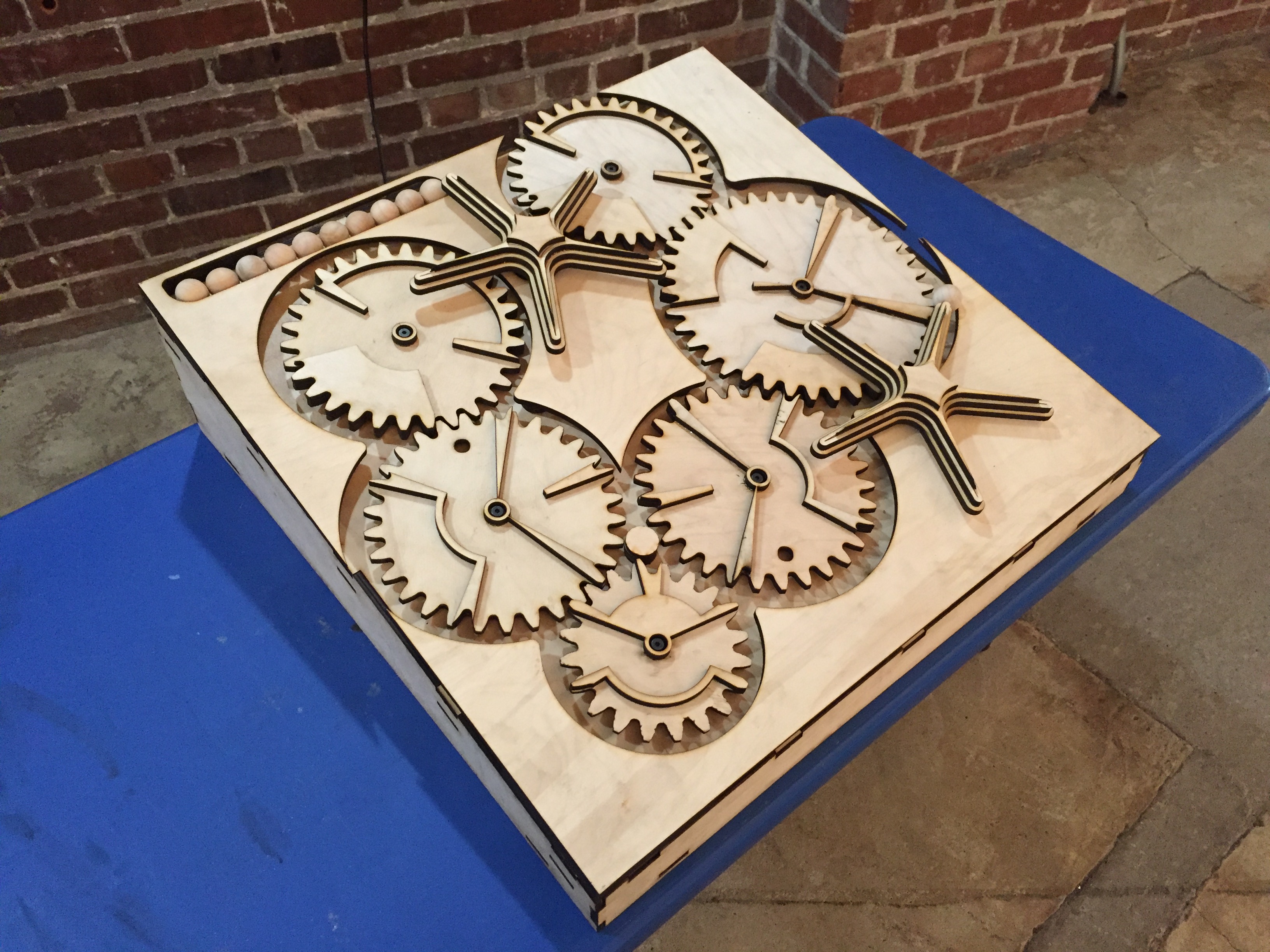Analysis
-
- What technical limitations did you discover during the visit?
- 9v batteries are not a sufficient source of power. We will need to pull from a wall outlet. We plan to use a multi-voltage power supply.
- A more reliable power source will ensure that our motor spins and functions at the appropriate speed.
- The photointerrupter (surprisingly) worked quite well. It was responding to user input. Of course, the result was not visible because of our power supply issue.
- One of the maze piece was pulled off during the visit. We need to ensure all of our maze pieces are properly glued down.
- In what ways did children and adults find a moment of delight in your project?
- Most children liked turning the gears. They were more interested in the movement that interacting with the ball-drop aspect. One child really liked taking off the starfish pieces and banging them on the table.
- Many visitors were more drawn to initially turn the starfish gears over the gears that were designed to spin.
- One child was very interested in the wooden balls we were using and began to eat them.
- The fact that we had an electric cord, frustrated many of the parents because they could not figure out how to elicit a response. One parent plugged in the cord after we intentionally unplugged it.
- Most of the kids were interested in the spinning/motion of the project and less the ability to control a ball using the gears. On the other hand, it looked like most adults found delight trying to manipulate the gears to make the ball reach a certain point.
- What aspects of the observed interactions were surprising to you?
- Many parents were very frustrated by the lack of motion. Because it was plugged in they were looking for on-switches. We tried unplugging it when the motor stopped working to give a clue, but parents would just plug it back in.
- People tried to turn the motor starfish more than the gears because they were easier to grab.
- One of the children became very interested in the ability to remove the starfish from its mount. He enjoyed banging it against the table and waving it in the air. It was surprising to see a parent encourage the child to bang the starfish against the table.
- What are additional or different interaction features which would help visitors perceive more of the delight, magic, function, or purpose?
- We are planning to to redesign our motor-movement function. The motor-driven gears will spin constantly and sustained interaction with the piece will increase the motor’s speed. In other words, with each full rotation of the gear, the speed of the motor will increase. We noticed that the interaction time with our piece was not long enough to elicit a response from the motor-driven gears. We think this new design will be valuable for attracting children and prolonging their interaction.
- We also plan to incorporate lights into the piece that will correspond with the motor’s speed. As the speed of the motor increases, the color of the lights will change from green to red. We think this will make the response of the interaction more noticeable.
- We would like to incorporate or more clearly denote a starting point. If we build a small track that allows the ball to drop in, we think this will cue visitors that the project is a ball drop.
- How does this visit change your vision of the fully realized project?
- We realized that we need to tweak our motion function. We think that the addition motor-driven motion will help the project. Perhaps it will bring more people to the project and also hold the kids attention for longer.
- The project should be more kid-proof and kid-friendly. Anything that can be removed (starfish) will be removed. We enjoyed watching this interaction and may promote more interactions like it by providing interchangeable pieces. We may build extra and different starfish pieces that can be swapped out by the kids.
- Finally, we think it will be more valuable for us to work with the current prototype than to recut and redesign the piece in its entirety. We will focus our energies on implementing the changes mentioned above and not scaling up.
- What technical limitations did you discover during the visit?
Revision Plan
-
- What will it take to resolve known technical limitations?
- We need to secure a multi-voltage power supply in order to get a constant 9v supply to our motor.
- We will incorporate LEDs and write the appropriate code.
- We will more thoroughly glue and secure the pieces for this project.
- How does the fundamental experience need to be modified?
- We plan to have the motor driven pieces constantly spin at a slow speed and speed up depending on how long a visitor spends with the piece. We also plan to add lights that will react to the speed of the hand turned gears. We noticed that the children were more interested in the physicality of the piece and not its intended functionality. We will take advantage of this by creating new interchangeable pieces that can be added on. This physical, building element was observed during our visit.
- What new capability will you add beyond the initial objectives?
- As mentioned about, new capabilities include the addition of LED light and interchangeable pieces. The goal is to prolong and make more enjoyable a visitor’s experience with the piece. The interchangeable puzzle pieces will cater more to the young children. The lights and refined motor function will be catered toward the older chilren and adults.
- Schedule: Here
- What will it take to resolve known technical limitations?
Documentation

Leave a Reply
You must be logged in to post a comment.